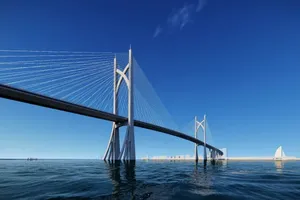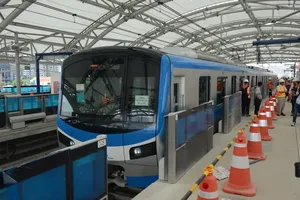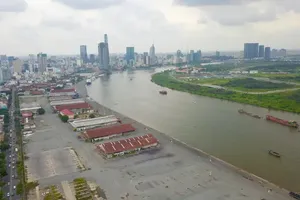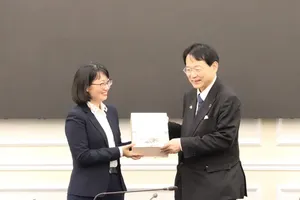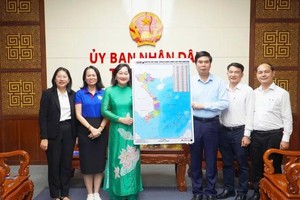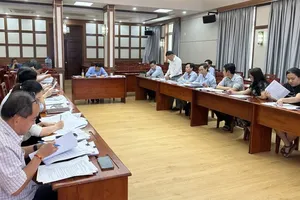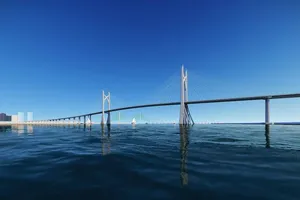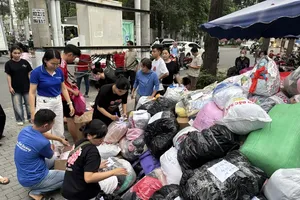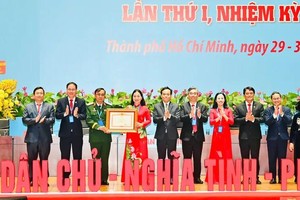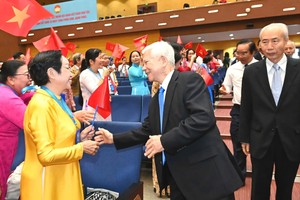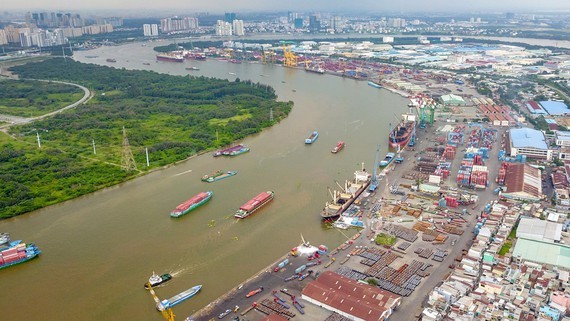 A corner of Tan Thuan port (Photo: SGGP)
A corner of Tan Thuan port (Photo: SGGP)
Deputy Director of Ho Chi Minh City Department of Transport Phan Cong Bang said that from now to 2025, the city will focus on completing radial axes and national highways with large traffic capacity, ring roads and connecting routes, inter-regional connection, paths connecting new urban areas, service and industrial zones which are prioritized for development of the city.
Additionally, the city has taken heed of the urban trunk route connecting new urban areas, industrial zones, waterway ports, airports, and focal works linking the region as planned.
To achieve the above goals and the target of developing traffic infrastructure with the rate of traffic land reaching 15 percent and the average road density reaching 2.5 km per square kilometer, the budget capital of Ho Chi Minh City in the period 2020- 2025 must meet 23 percent-24 percent of total investment capital.
Specifically, according to Mr. Phan Cong Bang, in the 2021-2025 period, the southern largest city planned to prepare to invest in eight key and large-scale projects in the form of public-private partnership, with a total investment of about VND81,225 billion, of which the city budget is about VND20,875 billion and the investor's capital is about VND60,352 billion.
Mr. Phan Cong Bang affirmed new investment projects must meet the criteria of large, essential, lifeline transport capacity to solve bottlenecks connecting to important gateways and traffic hubs, and strongly promote the economic development of the city’s socio-economic status and neighboring provinces.
Currently, city authorities are paying attention to the projects including Ring Roads 2 and 3 as well as the expansion of five radial national highways at the city gateways; dredging channels, and upgrading bridges on the route connecting the inner city with seaports.
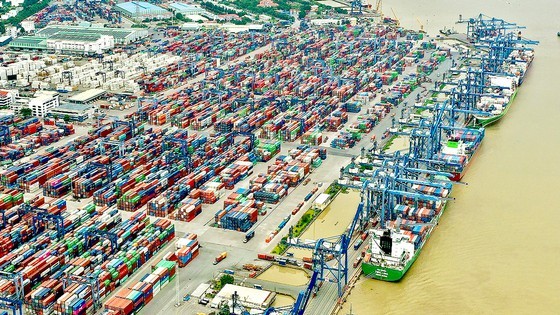 A corner of Cat Lai port (Photo: SGGP)
A corner of Cat Lai port (Photo: SGGP)
In addition, city authorities are also focusing on projects to reduce congestion at five gateways in and out of the city and traffic hubs connecting to Tan Son Nhat Airport and Cat Lai port - Phu Huu Industrial Park.
At the same time, the HCMC Department of Transport is proposing the Ministry of Transport complete the HCMC - Long Thanh - Dau Giay expressway with 6-8 lanes. Moreover, the Ministry should build the Ho Chi Minh City - Thu Dau Mot - Chon Thanh expressway with a length of 69km including 6-8 lanes, the HCMC - Moc Bai expressway with 4-6 lanes; Ben Luc - Long Thanh expressway with 6-8 lanes, 41 harbors and dredge five maritime channels (Saigon - Vung Tau channel; Soai Rap river; Dong Nai river; Dong Tranh - Tac Bai - Tac Cua - Go Gia channel; Dua - Tac Dinh Cau channel; Saigon river).
According to the HCMC Department of Transport, administrations in districts are slow in compensation and resettlement leading to a number of key and urgent works and projects that have to be temporarily suspended and disbursement can’t be done. On the other hand, the coordination of agencies and units has not been proactive and timely in advising and solving problems under the responsibility of state management of specialized agencies, leading to many problems being non-simultaneously solved.
Therefore, according to the Department of Transport, compensation and resettlement is a big bottleneck that needs to be removed in the coming time with the participation of the entire machinery of state and local authorities at all levels.
Accordingly, to remove the above bottleneck, Mr. Phan Cong Bang said, the Department of Transport has proposed that the People's Committee of Ho Chi Minh City should have a regulation on reward, punishment for heads of each agency as well as the collectives and individuals involved in each project. Last but not least, the city must ensure appropriate budget allocation and sufficient capital sources for site clearance projects and promulgate regulations to shorten the time for compensation and resettlement and handover of premises.
In addition, working groups at city, agency and unit levels should be established to convene weekly, monthly and quarterly meetings for reviewing the implementation of the projects and hiccups along the way to report to competent agencies which will help solve problems.
Furthermore, regulations on specific mechanisms and policies focusing on capital attraction, investment management, and development of transport infrastructure should be made. Plus, reports and proposals to increase the retention rate of annual revenue, the development of transport infrastructure, the legal framework for public-private partnership projects to attract non-budget investment capital should be done.
Currently, Ho Chi Minh City is implementing 160 traffic projects. Of 160 projects, 149 public investment projects are invested by the Department of Transport, units of the Department of Transport of Ho Chi Minh City, and 11 public-private partnership projects, with a total investment of VND109,878 billion. Of which, VND5,425 billion, VND33,262 billion, VND40,887 billion and VND30,303 billion are taken from the central budget, the city budget, the ODA allocation and public-private partnership contributions respectively.
Experts recommend developing a new potential port in Can Gio outlying district, on the left side of the Saigon - Vung Tau channel in the area of Binh Khanh commune, Nga Bay estuary, Cai Mep estuary and Go Gia islet. The port is in line with regulations on conservation of national biosphere reserve, able to handle vessels of 150,000 tons or larger and passenger ships of 225,000 GT.

